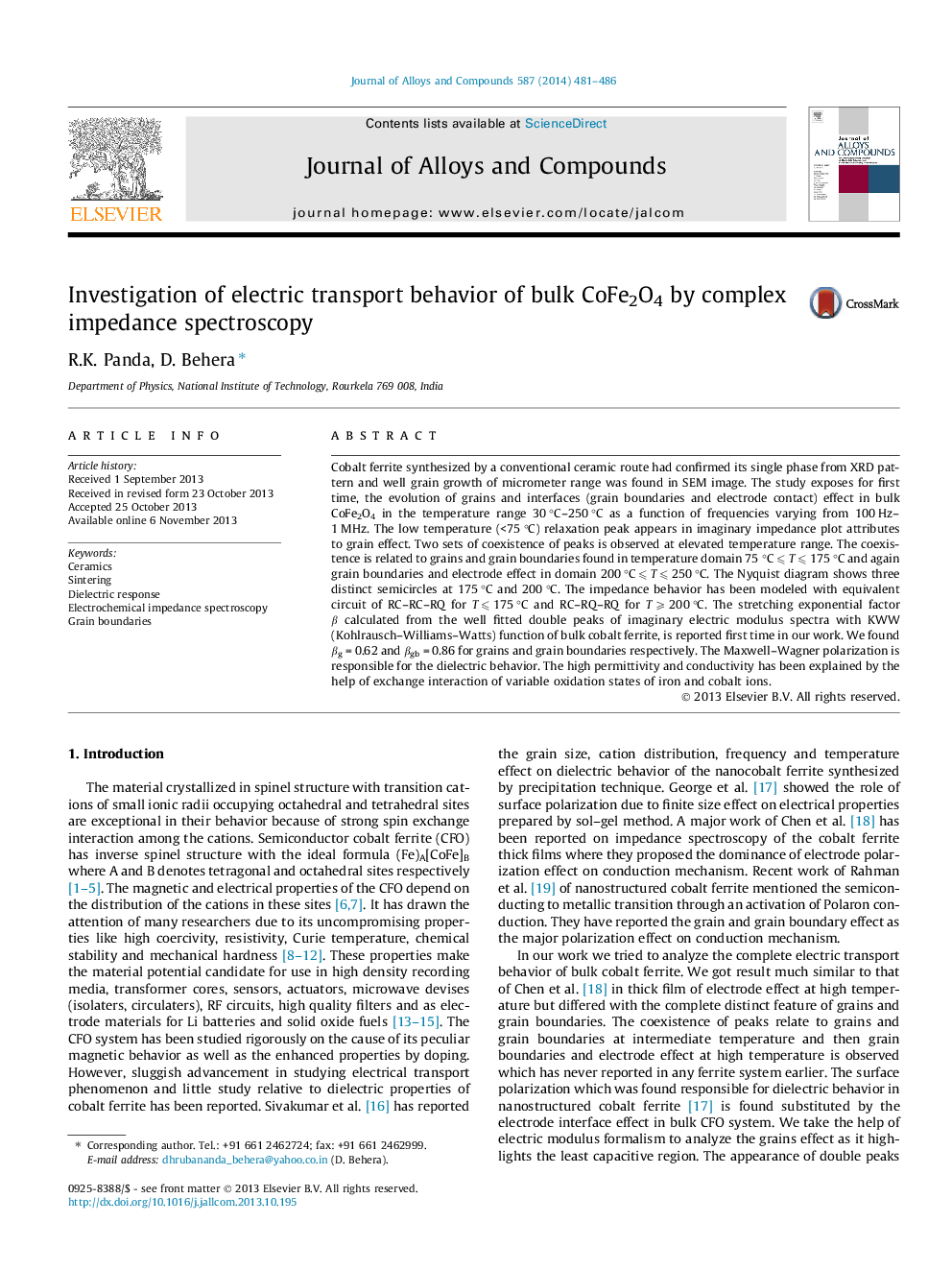| Article ID | Journal | Published Year | Pages | File Type |
|---|---|---|---|---|
| 1612333 | Journal of Alloys and Compounds | 2014 | 6 Pages |
•Study exposes evolution of grain and interfaces effect on bulk CoFe2O4.•Grain effects are dominated at lower temperature.•Interfacial polarization played important role at high temperature.•Multi oxidation states of Fe and Co regulates permittivity and conductivity.
Cobalt ferrite synthesized by a conventional ceramic route had confirmed its single phase from XRD pattern and well grain growth of micrometer range was found in SEM image. The study exposes for first time, the evolution of grains and interfaces (grain boundaries and electrode contact) effect in bulk CoFe2O4 in the temperature range 30 °C–250 °C as a function of frequencies varying from 100 Hz–1 MHz. The low temperature (<75 °C) relaxation peak appears in imaginary impedance plot attributes to grain effect. Two sets of coexistence of peaks is observed at elevated temperature range. The coexistence is related to grains and grain boundaries found in temperature domain 75 °C ⩽ T ⩽ 175 °C and again grain boundaries and electrode effect in domain 200 °C ⩽ T ⩽ 250 °C. The Nyquist diagram shows three distinct semicircles at 175 °C and 200 °C. The impedance behavior has been modeled with equivalent circuit of RC–RC–RQ for T ⩽ 175 °C and RC–RQ–RQ for T ⩾ 200 °C. The stretching exponential factor β calculated from the well fitted double peaks of imaginary electric modulus spectra with KWW (Kohlrausch–Williams–Watts) function of bulk cobalt ferrite, is reported first time in our work. We found βg = 0.62 and βgb = 0.86 for grains and grain boundaries respectively. The Maxwell–Wagner polarization is responsible for the dielectric behavior. The high permittivity and conductivity has been explained by the help of exchange interaction of variable oxidation states of iron and cobalt ions.
